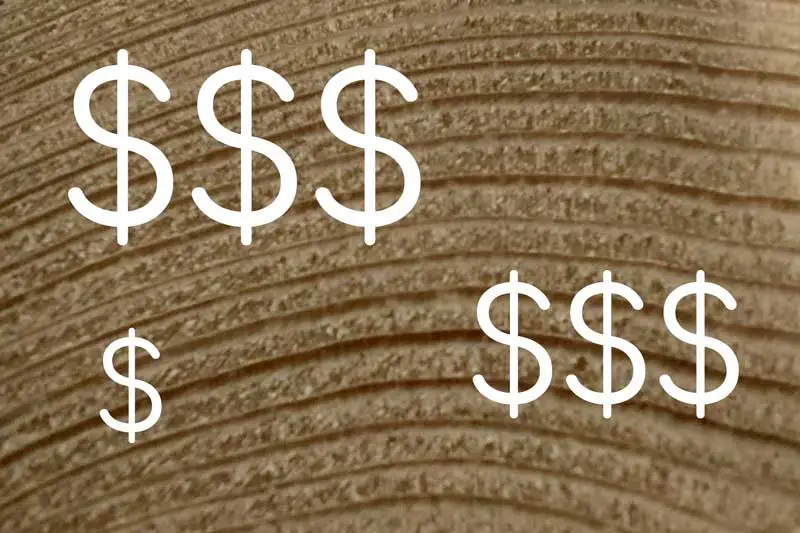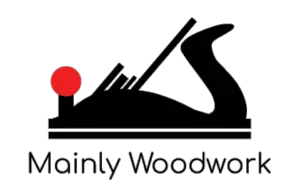Disclosure: This post may contain affiliate links, meaning I get a commission if you decide to make a purchase through my links, at no extra cost to you.
Working with wood can be expensive. Wood prices have skyrocketed in the last few years and it can be hard to find inexpensive wood for your woodworking projects. But if you choose the right kind of wood you might be able to obtain it without taking a huge hit in your wallet or sacrificing the quality of your finished project.
The cheapest wood comes from spruce, pine, and fir. Spruce, pine, and fir grow quickly and are highly sought after as commercial lumber. This means that the production and harvesting occur on a bigger scale than other types of wood. When talking about lumber, spruce, pine, and fir, also called “SPF” woods are the ones commonly regarded as cheap.
But spruce, pine, and fir are not the only woods that are cheap. There are also cheap hardwoods like poplar, that are used more for DIY projects and utility reasons less used for structural projects. So let’s trough some cheap woods AND see why some woods are cheaper than others.

Why Are Some Woods Cheaper Than Others?
There are many different factors that determine the price of a certain type of lumber or wood. The main factors for pricing lumber are commercial uses of the wood, the quality of the wood, the species of tree the wood comes from, and availability in your area. If the wood has many commercial applications and is used in the woodworking industry then the production of these types of trees will be higher due to demand. The result will be a higher availability of the wood in different shapes and sizes and the wood will be cheaper and more attainable.
Spruce, Pine, and Fir are widely used and have many different applications. It is used for construction, flooring, DIY projects, paneling, floors, roofing, and much more. Spruce, Pine, and Fir also grow quickly, straight and tall. This makes for simple processing of the tree after it is cut down.
Compare this to a hardwood like oak, for example, oaks grow slowly, are not as widely commercially used, and grows thick trunks that branch out. This makes oaks more expensive and less available.
The quality of the wood also has a big impact on the price. In general, the rougher the wood, the cheaper it is. If the wood has many knots, has big knots, has uneven surfaces, wholes, or any kind of deformities it will be sold at a cheaper price or at a lower grade of lumber.
The availability of a certain type of wood in a certain area also impacts the price. The cheapest wood in your state might not be the cheapest wood in another state. The further the tree has to travel after being cut down, the more the price goes up.
The Cheapest Woods
Pine is readily available in the northern hemisphere. It is fast-growing and simple to plant and harvest. Pinewood usually has many knots and uneven features in the wood. This makes for cheap Lumber. The most common pine species in use in the US are white pine and yellow pine. White pine is softer than yellow pine but in general, pine is a fairly soft wood. Pine is used for flooring, framing, construction, furniture, DIY wood projects, and much more.
Fir lumber is a little bit more expensive than pine lumber. Fir is straight-grained and lacks character compared to pine. Fir’s has a creamy white to red’ish color depending on the species. The advantage of fir wood is its durability, it is not badly affected by weathering and always retains its shape without twisting, turning, and splitting. Firwood is used for construction, outdoor furniture, furniture, plywood. Spruce wood is pretty similar to pine wood. The difference is that Spruce wood is more straight-grained and has a better weight to strength ratio than pine.
Spruce is widely used in Europe and in Northern US. Fun Fact: The first airplane (The Flyer) built by the wright brothers was made with spruce. Spruce wood is used for construction, paper, musical instruments, and pallets.
Here is a table of some prices for 2-in x 4-in x 96-in studs I found on Lowe’s at the moment of writing ( June 2021 ). I could not find a spruce stud in 2 x 4 so the spruce is in 2 x 3 and was found in home depot.
| Species | Price | Size | Length |
| Southern Yellow Pine Stud | 3.91 $ | 2-in x 4-in | 96-inches |
| Spruce Stud | 5.98 $ | 2-in x 3-in | 96-inches |
| Fir Stud | 8.37 $ | 2-in x 4-in | 96-inches |
| Whitewood Stud* | 8.25 $ | 2-in x 4-in | 96-inches |
Now, normally when shopping at big home centers, the wood will be sold under the name of Whitewood. As you can see, the prices do not really vary a lot between the different cheap softwood species. But what it comes down to is the quality of the wood. The southern yellow pine on this list is of lesser quality, hence the cheap price. You get what you pay for when it comes to wood. But for some projects, a lesser quality is ok.
*Whitewood is usually either pine, spruce, or fir.
Whitewood
The cheapest wood you can get your hands on is called whitewood when you buy it on the shelf of home centers. Whitewood is an umbrella term that includes any wood that has a fairly white color and little to no visible grain. Whitewood can be anything from spruce, fir, pine, and many more. The whitewood the home center sells is of poor quality and is of little use for proper woodworking. It will split, crack and bend on your way home from the store. I might be a little bit harsh now, but you don’t get good quality wood when going for a cheap mystery wood. I would recommend buying wood that you know the species of.
Whitewood is originally the name of the Yellow-Poplar tree and has nothing to do with softwoods like pine, spruce, or fir. This got me very confused when researching for this topic, but the original whitewood is that of the yellow-poplar.
To end the confusion of the term whitewood, here is a quick recap:
Home Center Whitewoods = Any cheap white wood that is sold on the shelf ( typically fir, pine, or spruce )
Original Whitewood = Yellow Poplar
The cheapest Hardwoods
Hardwoods are not farmed on as big of an industrial scale as softwoods, hardwood usually grows slower than softwoods, and has less industrial value and structural applications than softwoods. This does not mean that hardwoods are of less value or usefulness, hardwoods just have more niche uses and are highly valuable for many different reasons. But hardwoods will usually be more expensive than softwoods.
Poplar is the cheapest and most common hardwood. Poplar is mainly used as a utility wood, it is used for pallets, crates, furniture frames, paper, and plywood.
Hardwood prices hugely boil down to the availability in your area. Your best bet is to visit your local hardwood dealership, most people have one within an hour’s drive. Hardwood dealerships are can be a bit intimidating at first since they are so different from big brand stores like Lowes or Home depot. But don’t be afraid to show up and ask a lot of questions.
Maple and Oak are also fairly cheap and available hardwoods.
Conclusion
The cheapest woods are in general pine, spruce, and fir. They are often sold under the name of whitewood. The cheapest woods are often the ones of the poorest quality and grade, but they are still useful for certain projects. We also have cheap hardwoods like poplar, but hardwoods are generally used less commercially and grow slower, so hardwoods are usually more expensive.
But as always I hope you learned something from this article, and have a great day.

